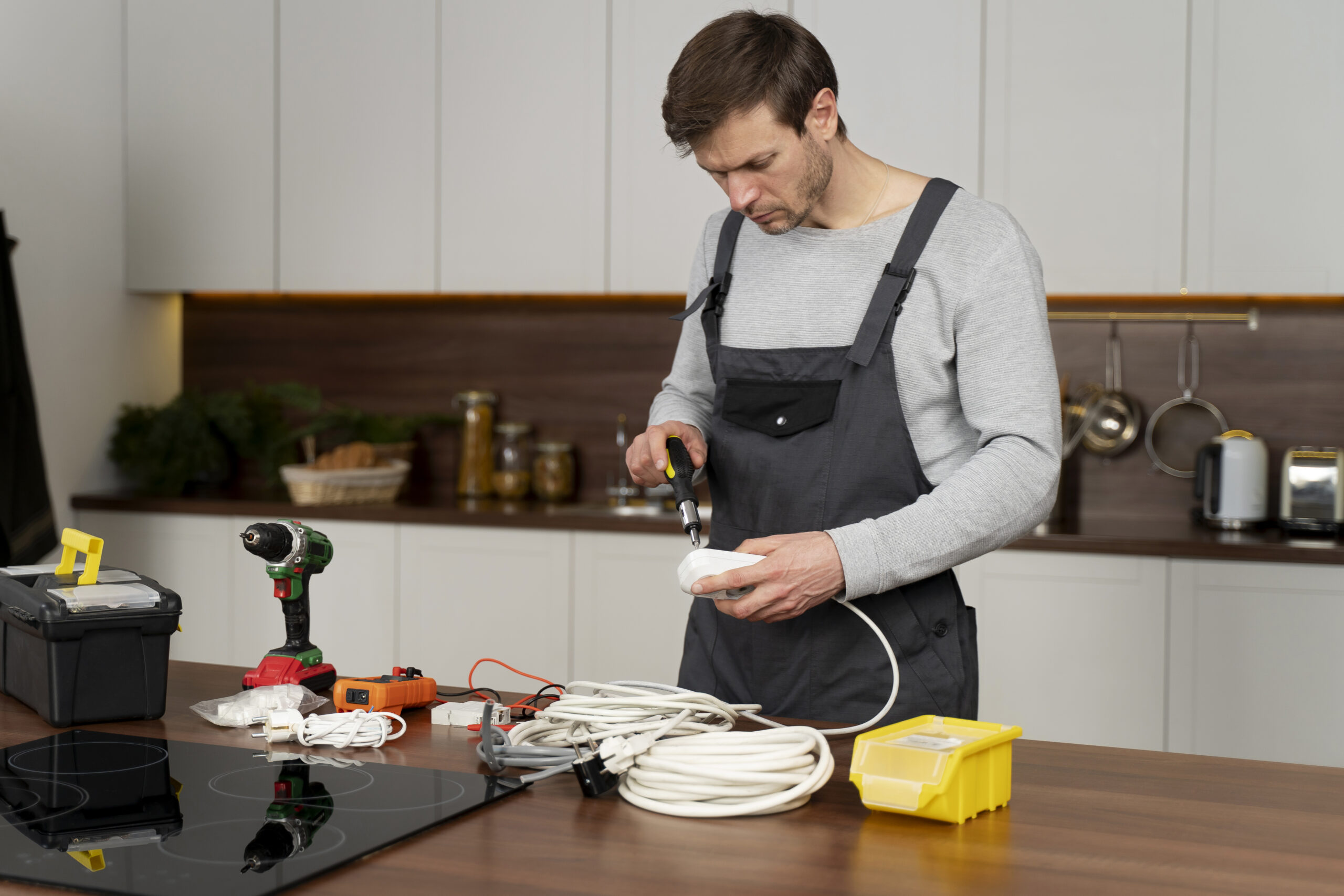
Today, we have many household kitchen appliances, including a microwave, a refrigerator, a mixer grinder, a dishwasher, an electric kettle, and more. If you are a manufacturer of any of these products, you must focus on manufacturing safe, high-performance, and durable products. This helps your customers use kitchen appliances easily and safely without worrying about accidents like fire or electric shock.
Better appliance manufacturing helps your customers get their work done quickly and correctly. This is where household kitchen appliances testing helps manufacturers create safe and high-quality products. You might already know a bit about this testing method, but there are several types of household kitchen appliance testing you may not be aware of. In this guide, let’s talk about them!
Introduction to Household Kitchen Appliances Testing
Household kitchen appliances testing checks the safety, performance and durability of appliances. This testing involves conducting a series of evaluations on appliances such as microwaves, blenders, toasters, dishwashers, ovens, coffee makers, mixers, air fryers, refrigerators, electric irons, and fans to ensure their safety, performance, and reliability. The entire testing process is carried out in a laboratory by trained experts to ensure accuracy and reliability.
Types of Kitchen Appliances Testing
If you want to make a high-quality home appliance, you need to look at many things to make sure your product is strong, safe, and works well. A testing lab gives access to top-notch technologies and tools to perform deep kitchen home appliance testing. They have all the machines that are required for high-performing and successful testing, including thermal chambers, power meters, noise analysers, vibration testers, safety testers, calorimeters, and more. Here are the types of kitchen appliance testing you can expect from a home appliance testing service provider:
Performance Testing
Performance testing involves checking the effectiveness of your home appliances. A trained tester measures factors like cooking time and the consistency of your appliances. They analyse their functioning using advanced hardware and software tools to measure energy efficiency. This helps you find scope for improvements and ensure that the items operate properly under different conditions.
Safety Standards Testing
Safety testing is essential for your home appliances to ensure they are safe and reliable. This testing involves following the NABL-accredited appliances testing procedure to comply with industry regulations. The approach is simple; experts test and evaluate the insulation, wiring and overheating prevention of every component of your home appliances. With the help of tools like voltage testers, insulation resistance meters, and ground fault circuit interrupters, they ensure there are no electrical, thermal, or mechanical hazards in your products. That will help you follow the safety standards and avoid any potential accidents.
Energy Efficiency Testing
Energy efficiency testing BIS Standards help measure the energy appliances consume under different environmental conditions. Testing lab experts determine whether the appliance meets energy-saving standards or not. In this phase, Energy Efficiency testing measure energy usage during operating modes, standby periods, and off-mode conditions. This approach analyses the system based on power consumption and low environmental impact on appliances. This BIS standard for home appliances extends their lifespan and enhances their performance while reducing power consumption.
Noise and Vibration Testing
Noise and vibration testing evaluate sound levels and vibrations emitted by kitchen appliances. This step is necessary to ensure that your equipment produces environmentally friendly and low noise during operations. If your product is experiencing noise or vibrations, experts utilise an advanced testing library to identify the root cause. That helps you to fix them in the production line and deliver acceptable noise and vibration appliances to your consumers.
Environmental Impact Testing
Environmental impact testing helps manufacturers understand how their kitchen appliances affect the environment. For the consumer’s trust and reputation in the market, your product should comply with eco-friendly standards and contribute to sustainability. Thankfully, Environmental testing labs reveal hidden faults and give you detailed reports of their energy consumption, emissions, and recyclability. That ensures you can build home appliances that are in line with eco-friendly practices.
Water and Moisture Resistance Testing
Water and moisture resistance testing checks whether your kitchen appliances are safe to use in wet environments without electrical risks. Appliances like your blender and dishwasher must run efficiently and have water and moisture resistance. This makes them efficient in running without electrical risks. In a water leakage test, experts help you ensure your appliance can resist water and humidity.
Functionality Testing
Functionality testing involves analysing whether your kitchen appliances are working as intended. In quality testing of home appliances under BIS, trained testing professionals check the buttons, settings, and other important features to ensure that the overall functionality of your machines is reliable.
Final Words
House kitchen appliances help manufacturers see how user-friendly their products are. They not only test to find hidden problems but also check the design, ease of use, and how comfortable your product is for customers. In-depth testing makes your appliances easy to clean and maintain for your customers. That is the important part for long-term use of your product. Testers detect potential problems beforehand and save time and cost in products. We hope you understand not only the types of home kitchen appliances testing but also their overall essence for your home appliances product.